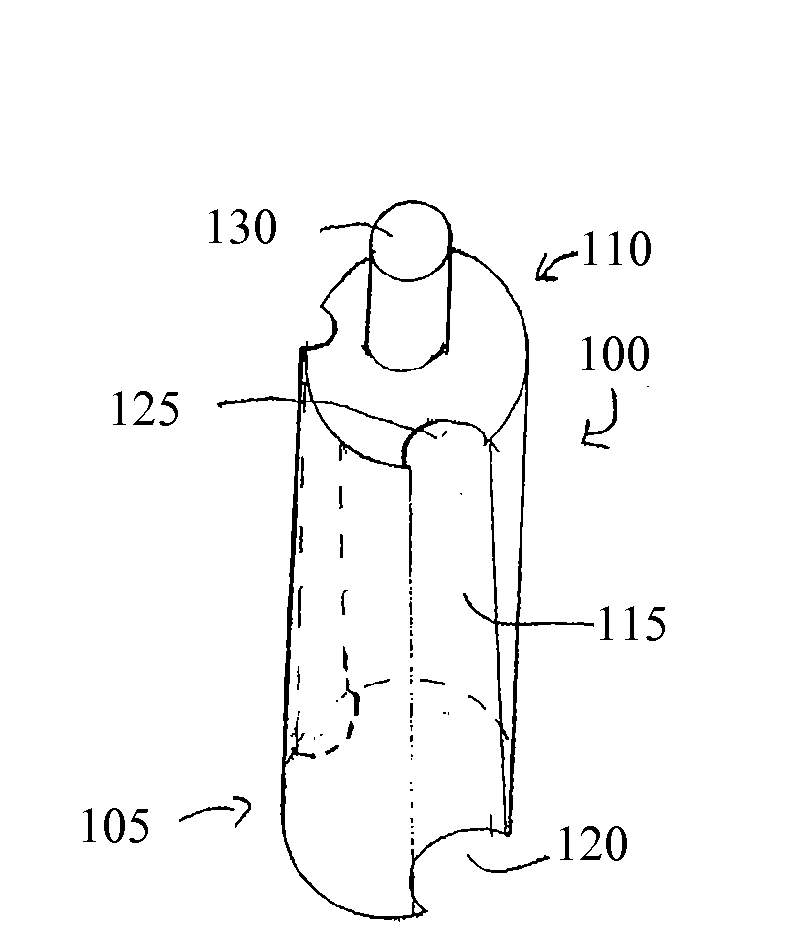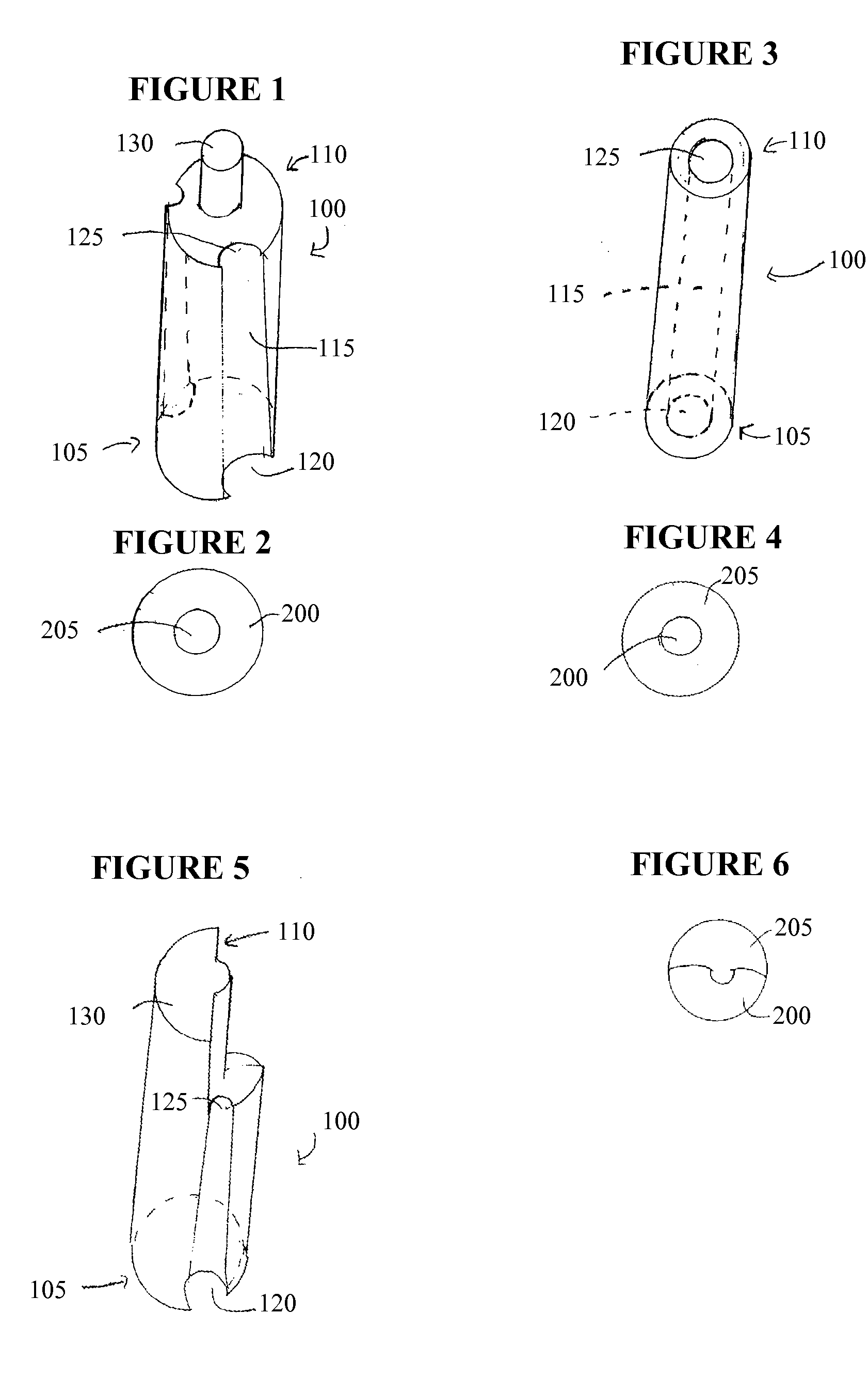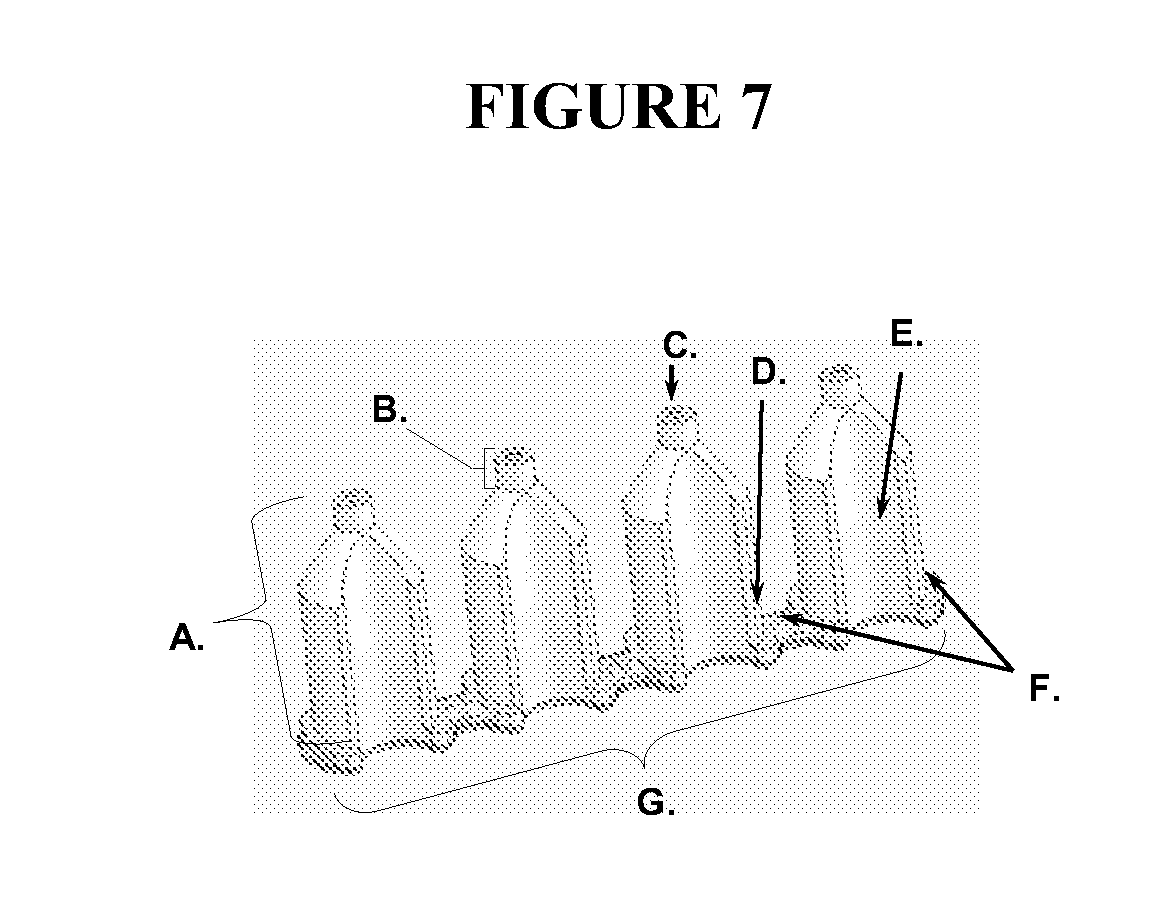Devices for cell assays
- Summary
- Abstract
- Description
- Claims
- Application Information
AI Technical Summary
Benefits of technology
Problems solved by technology
Method used
Image
Examples
example 1
Demonstration of Mask Functionality
[0176]A 100 ul portion of 3T3 fibroblasts (at 25,000 cells per well and treated with mitomycin C to inhibit proliferation) were seeded into wells of a Greiner 96-well flat bottom plate that contained cell seeding inserts. The fibroblasts were allowed to adhere for four hours at 37° C., 5% CO2. The inserts were then removed from the test wells and the wells were washed with PBS to remove non-adhered cells. A 100 ul volume of cell culture media (MEM containing 10% FBS) was then introduced into each well. In negative control wells, the seeding inserts remained in place for the duration of the incubations. The seeded plate was incubated overnight (˜21 hours) to permit migration of the cells in the test wells. Following incubation, the inserts were removed from the control wells. All wells were washed with PBS and the cells were stained with a fluorescent Calcein AM dye using standard methods per manufacturer instructions. The well contents were observe...
example 2
Influence of Mask Aperture Size
[0178]An analysis of migration assay performance was performed using a set of machined masks, each having 96 apertures of a defined diameter. The aperture diameters tested ranged from 1.8 to 2.3 mm in 0.1 mm increments.
[0179]Cells were seeded into four assay plates containing the silicone inserts and cultured overnight to allow the cells to attach. At this point, the inserts were removed from two of the four plates. The inserts were left in place in the other two plates to serve as controls. Two migration intervals (6 and 22 hours) were evaluated. Following each time interval one test and one control plate was stained with Calcein AM. After 22 hrs over 90% of the analytical area in the wells of the test plate contained cells.
[0180]To determine the extent of cell migration into the exclusion zone, each of the six masks with apertures ranging from 1.8-2.3 mm were fit to the bottom of the stained plates. The prototype masks do not have a complete set of r...
example 3
Photoimmobilized Hyaluronic Acid Transiently Disrupts Cell Adherence to Tissue Culture Plate Surfaces
[0184]This example describes the ability to block adhesion of HT-1080 cells to a surface coated with hyaluronic acid (HA). The HA was functionalized with a photoactive linker and immobilized to the bottom of a well in a tissue culture plate. The material was prepared by reacting the carboxyl group of HA disaccharides with the amine group of a heterobifunctional crosslinker (4-[p-azidosalicylamido]butylamine, ASBA) via carbodiimide chemistry. The other end of the ASBA crosslinker contains a photoactive group, so this reaction renders the HA photoactive. Carboxylate modifications of the HA do not affect its degradability by hyaluronidase (HA-ase). Briefly, the HA was dissolved in MES buffer and reacted with EDC and Sulfo-NHS for 15 min at room temperature. The pH of the buffer was adjusted to ca. 7.0 with concentrated PBS and ASBA was added to the solution and allowed to react for 2 h ...
PUM
 Login to View More
Login to View More Abstract
Description
Claims
Application Information
 Login to View More
Login to View More - R&D
- Intellectual Property
- Life Sciences
- Materials
- Tech Scout
- Unparalleled Data Quality
- Higher Quality Content
- 60% Fewer Hallucinations
Browse by: Latest US Patents, China's latest patents, Technical Efficacy Thesaurus, Application Domain, Technology Topic, Popular Technical Reports.
© 2025 PatSnap. All rights reserved.Legal|Privacy policy|Modern Slavery Act Transparency Statement|Sitemap|About US| Contact US: help@patsnap.com



